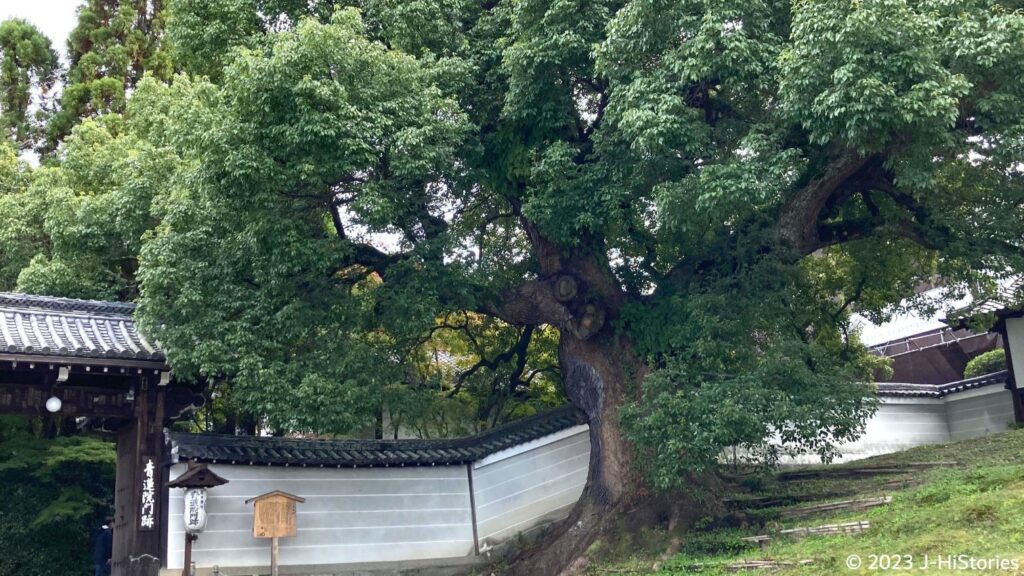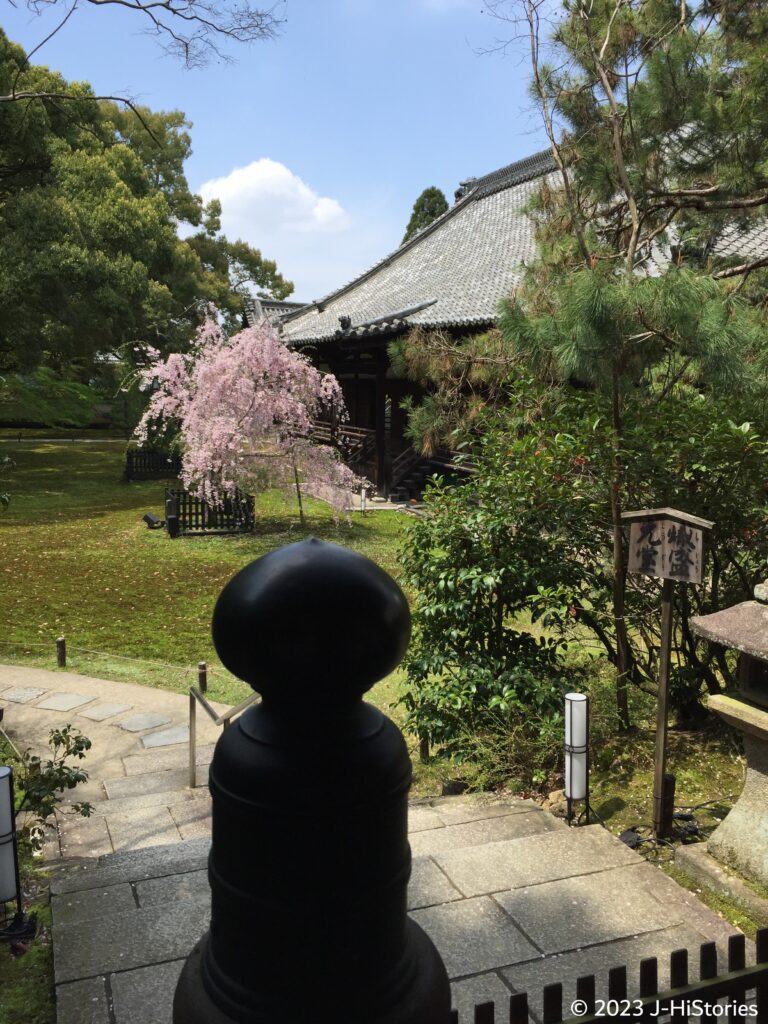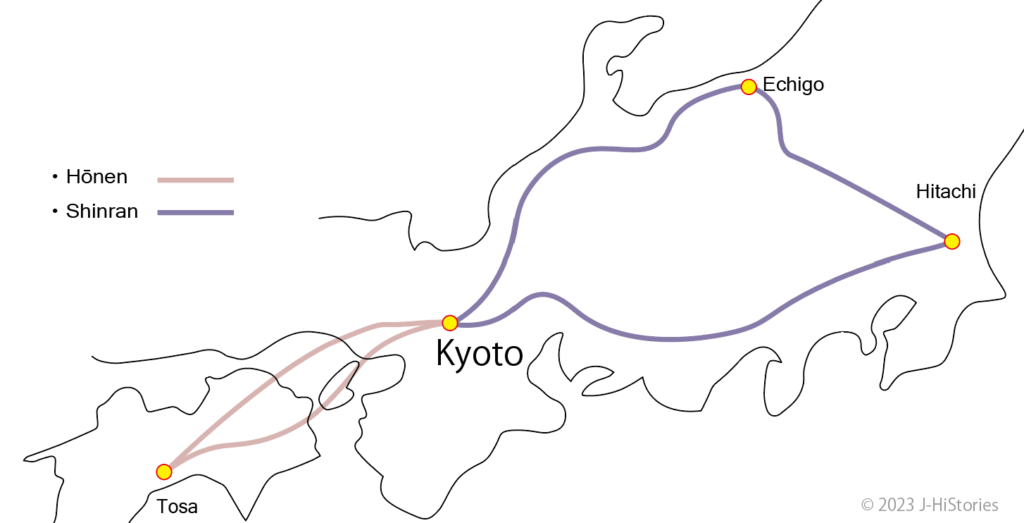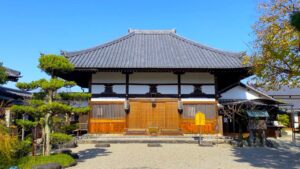Shorenin Temple, Birth of Buddhism to Save the People
Shorenin Temple Kyoto sheltered and protected two persecuted Buddhists, Honen (1133-1212, 法然)and Shinran (1173-1263, 親鸞), from the Enryakuji Temple of the Tendai sect of Buddhism. Honen and Shinran were revolutionary figures in the Buddhist world whose teaching, later Japanese Pure Land Buddhism, was the chanting of the name of Amitabha Buddha single-mindedly towards enlightenment, trusting that one will be reborn in the Pure Land. It was different from the conventional teaching led by the Tendai Sect which needed the ascetic practice to attain enlightenment. Shorenin is a Monzeki temple of the Tendai sect of Buddhism that lies at the base of Mount Higashiyama in Kyoto. Its successive head priests were members of the imperial family and nobility. At the temple gate, the fresh green leaves of camphor trees rustle in the wind, inviting visitors to enter the temple. Let's explore their lives and beliefs as originators of Japanese Pure Land Buddhism with a historical background.

Blue Illusion, Hymn to Life, Pure Land

At the guest hall called Kachoden, the spectacular paintings of lotus flowers on the 60 sliding doors catch your attention. The paintings are titled "Blue Illusion, Hymn to Life, Pure Land" and were dedicated by a famous painter, Hideki Kimura (Reference: Ki-Yan official site). In Buddhism, it is believed that lotus flowers bloom in the Pure Land. The blue lotus in "Blue Illusion" represents the heart of compassion, which is the basis of Buddhist teachings. The frogs, dragonflies, and other creatures depicted with the dark red lotus in "Hymn to Life" express the joy of being alive, while the blue, red, and yellow lotuses in "The Pure Land" represent the bliss of the pure land itself. The paintings are avant-garde and intense, yet they harmonize with the prestigious Monzeki temple.
Honen and Shinran Entered the Priesthood at Shorenin Temple

Shorenin Temple is one of the three monasteries of the Tendai sect (Shorenin, Sanzen-in, and Myoho-in), headed by Enryakuji Temple, located on Mount Hiei. It is also considered a sacred site for the Jodo sect because Jien, the third head priest of Shorenin and the head priest of the Tendai sect, had a deep understanding of the teaching of the Jodo sect, which was still a new religion at that time. Jien sheltered and supported two key Buddhists, Honen and Shinran, from the oppression of Enryakuji. Jien granted a portion of the temple to Honen, who then built a hermitage for the spread of the doctrine of the Jodo sect. Shinran, a disciple of Honen and the founder of the Jodo Shinshu sect, was ordained at Shorenin at the age of nine. About 200 years later, the 8th direct generation of Shinran, Rennnyo, expanded it into the largest religious sect in Japan, with approximately 1.5 million followers. (Source: 2016 edition of the Religion Yearbook, published by Agency for Cultural Affairs, Government of Japan in February 2017)
Conventional Buddhism Can Not Save People Caused by Battles and Famine


The period in which Honen and Shinran lived was characterized by chaos and revolution from the late Heian period (794-1185) to the emergence of the samurai. During this time, ordinary people such as farmers, faced battles, natural disasters, and continuous major earthquakes and typhoons, leaving them with no power to survive. Famine was rampant, and corpses littered the streets, leading to a sense of hopelessness and despair. However, the teaching that "the moment you believe in Amida Buddha, you are guaranteed to be reborn in the Pure Land” brought hope to the people, saving them from their suffering. Honen's revolutionary approach to Buddhism through the practice of "Nembutsu," and Shinran's perseverance in spreading Honen's teachings despite religious perception passed down their beliefs to future generations.
Senju-Nenbutsu (the Single-Minded Recitation of the Nenbutsu) Saved People
Honen’s doctrine was too radical. Therefore, in 1207, the Imperial Court finally imposed severe punishments. Honen was exiled to Tosa (Kochi) and Shinran was sent to Echigo (Niigata). Honen was 75 years old, and Shinran was 35. Five years later, they were forgiven. Honen returned to Kyoto but died the following year at the age of 80. He is said to have recognized himself as a Tendai monk until the end of his life, although he is thought of as the founder of the Jodo Sect. Shinran moved to Hitachi (Ibaraki) and spread Honen’s teachings there as a follower of Honen for 20 years as Honen’s follower. Then, he returned to his hometown of Kyoto around the age of 62 and concentrated on writing "Kyogyoshinsho," a collection of writings on the true Buddhism of Honen, which later became known as Jodo Shinshu Buddhism. In a nutshell, it states that one must surrender everything to Amida Buddha, and recite the Nembutsu to attain true rebirth in the Pure Land and that ascetic training is not necessary. Shinran continued to write extensively and passed away at the age of 90. Shinran had no intention of founding his own religion; instead, spreading Honen's true doctrine was the joy of his life.

The Camphor Trees Welcome Anyone
We invite you to visit Shorenin Temple and reflect on the history of these two persistent Buddhists of the Jodo and Jodo Shinshu sects. The five camphor trees in front of the gate were planted by Shinran himself. These large spreading branches and leaves embody the gentle nature of Shinran. Anyone who stops by will feel the warmth of salvation.
Honen and Shinran Timeline
| 1133 | Hōnen was born | Hōnen =1 | Heian |
| 1141 | Hōnen's father was killed | Hōnen =9 | |
| 1145 | Hōnen started to study Buddhism at Hieizan Enryakuji Temple | Hōnen =13 | |
| 1052 | "Age of the Final Dharma" was believed to begin in 1052 | Hōnen = 20 | |
| 1156 | Hogen war | Hōnen = 24 | |
| 1159 | Heiji war | Hōnen = 27 | |
| 1160 | Yoritomo was exiled to Izu | Hōnen = 28 | |
| 1173 | Shinran was born | Shinran =1 | |
| 1175 | Hōnen attained Senju Nenbutsu | Hōnen =43 | |
| 1180 | Kiyomori's rival, Yoritomo raised an army to attack Kiyomori & his family | Hōnen = 48 / Shinran = 14 | |
| 1181 | Shinran entered the priesthood | Shinran =9 | |
| 1185 | Heike fell at the Dannoura War | Hōnen = 53 / Shinran = 15 | |
| 1185 | Minamoto Yoritomo established Kamakura Shogunate | Hōnen = 53 / Shinran = 15 | Kamakura |
| 1186 | Hōnen debated Senju Nenbutsu with Tendai sect's Buddhists at Kyoto Ohara | Hōnen = 54 | |
| 1201 | Shinran stadied under Hōnen | Hōnen = 69 / Shinran = 29 | |
| 1207 | Shinran exiled to Echigo, Hōnen left Kyoto | Hōnen = 75 / Shinran = 35 | |
| 1211 | Hōnen and Shinran was forgiven for his exile. | Hōnen = 79 / Shinran = 39 | |
| 1212 | Hōnen passed away | Hōnen = 80 | |
| 1214 | Shinran started missionary work in Kanto area | Shinran = 42 | |
| 1232 | Shinran returned Kyoto | Shinran = 60 | |
| 1262 | Shinran passed away | Shinran = 90 |
Recommendations to visit
- Access: 30 minutes from Kyoto Station. Take bus #5 bound for "Iwakura Soshajo-mae (岩倉総車場前)” at A1. Get off at "Jingumichi (神宮道)" bus stop, then a 3-minute walk.



2 thoughts on “Shorenin Temple, Birth of Buddhism to Save the People”
Comments are closed.